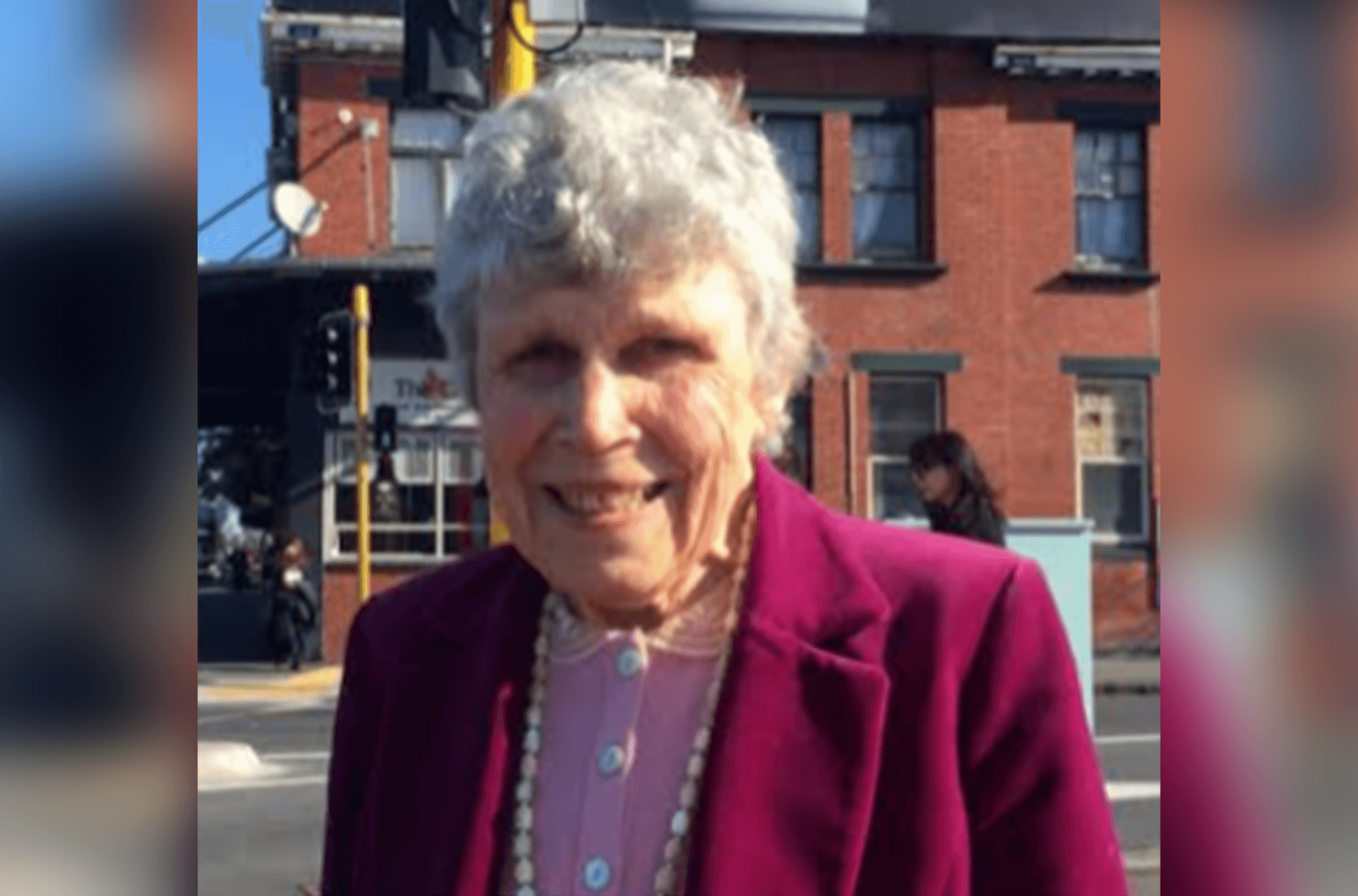
After my 21st birthday and before the advent of seven-digit phone numbers, I was given a local anaesthetic and a fetus was aspirated out of my womb. The abortionist was Dr Margaret Sparrow (photo above). She resembled her name, small and fine-boned… A puff of wind would blow her away, my mother might have said, but I found Dr Sparrow intimidating. Her manner was formal. She did not smile and delivered the necessary information to me with a cool detachment. I assessed her age as very old (she was 52), and I knew nothing about her except that she worked at Parkview Clinic and had appeared on TV advocating for a woman’s right to choose. I thought feminists were aggressive and abortion was only for girls who’d been stupid… I lay on the operating table and Dr Sparrow did to me, “within the framework of New Zealand law” what she had done illegally to herself when she was my age.
In her book Abortion Then & Now, Margaret Sparrow describes 1956 as “an eventful year. In chronological order, I was married, was nearly killed in a car crash, graduated BSc, had my first job as a research assistant, turned 21, got pregnant, and had an abortion.”
There is a photo of young Margaret at her graduation ceremony at the Wellington Town Hall. Her academic gown falls over a shimmery formal dress. She holds her degree scroll and a posy of flowers, and she is gorgeous, bright-faced, smiling. “You are looking at a criminal,” she tells us.
Except on medical grounds, abortion is a crime, warns a 1944 advertisement from the Department of Health. Inducing your own abortion could see you sent to prison for up to seven years. In 1937, the McMillan report on abortion estimated that 6,000 abortions – one in five pregnancies – were performed in New Zealand every year, and of those, 4,000 were illegal. We had one of the highest death rates from abortion in the world.
The 1944 advertisement puts the number of illegal abortions at 4,600 a year….
Some certifying consultants appear to be of the view that it was a waste of their time to perform abortions when women were not prepared to take responsibility for preventing an unintended pregnancy. – Abortion Services in New Zealand: a report prepared for the Women, Children and Family Health Programme to aid in planning and policy formulation, 1987.
The newly-weds, Margaret and Peter, had been using the most common contraception available – a diaphragm. To have it fitted, Margaret needed to provide proof that she was going to be married. Single women could not be prescribed contraception; it was considered unethical. She and Peter were too poor to afford an engagement ring, so she cut out her marriage notice from the Fendalton Parish magazine and took it along. The diaphragm failed. Margaret got pregnant.
“The first thing you do is all the silly things,” she told a journalist in 2015. “The old wives’ tales – jumping, skipping, exercise. Then I took a bottle of DeWitt’s Pills. All that did was turn my urine blue.” Peter knew of a chemist in Christchurch who sold “personal products” by mail. This was George Bettle, Everybody’s Chemist, his advertisements said. The bottle arrived in a brown paper bag. Its typewritten label simply said: “The Mixture. Take one tablespoon full three times daily.” Margaret took her medicine and had an early miscarriage.
Abortifacients have been ingested by women for as long as people have recorded such remedies….
When Margaret induced her own abortion, New Zealand was following British law, set in 1938 when the case of R v. Bourne decided that a 14-year-old girl who’d been raped would be mentally damaged if she was forced to have the baby. The judge stated that a doctor could justify performing an abortion if they were certain that “the probable consequence of the continuance of the pregnancy is to make the mother a physical or emotional wreck”.
A physical wreck. Potassium permanganate in the vagina caused severe chemical burns. Oral remedies led to kidney failure and poisoning. Douching caused death by air embolism, with heart stoppage due to cervical shock.
Some of the young women who went to George Bettle for help said he sexually assaulted them. He committed suicide in 1964 while on remand for a charge of supplying the means to procure illegal abortions. He brought about his own death by drinking a bottle of poison…
Margaret had no side effects from George Bettle’s Mixture other than an early miscarriage. …She did not have to use a knitting needle, bent coat hanger, crochet hook, twig, ballpoint pen, chicken bone or bicycle spoke pushed through her cervix. No rubber catheter, bicycle pump nozzle or enema syringe. She was not at risk of dying of gas gangrene poisoning or toxaemia from peritonitis caused by a septic abortion. Before antibiotics, once you went into septic shock, there was no hope. The women could not breathe, they haemorrhaged, their organs failed. By 1956, antibiotics had greatly reduced the death rate but only if the woman sought medical help early enough. Abortion was not only illegal but also carried such social stigma that, as Margaret said, “We didn’t talk about it even to best friends.”
Margaret was an active member of ALRANZ, the Abortion Law Reform Association of New Zealand/Aoteora, which was founded by some 60 concerned individuals in Auckland in 1970. Margaret served as its president from 1975 to 1980, and again from 1984 until 2011. She also had long-standing involvement with the Family Planning Association of New Zealand until her retirement. ALRANZ lobbied for total decriminalisation of abortion in New Zealand for 40 years, a goal that was finally realised in 2020.
SOURCES: The Spinoff, by Catherine Robertson, 9 January 2023 (excerpts) ; PHOTO: CC BY-SA 4.0 in Wikipedia article about ALRANZ, last edited Dec 2022.



